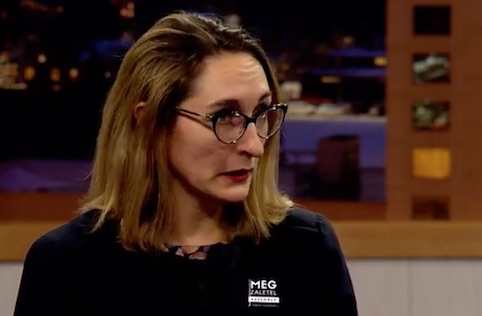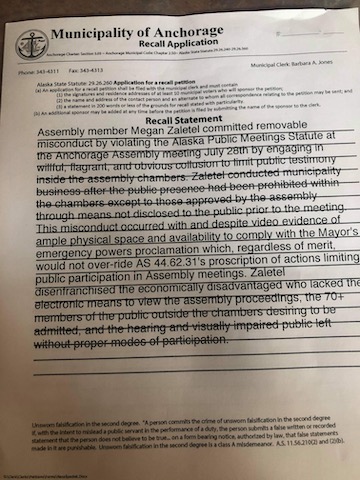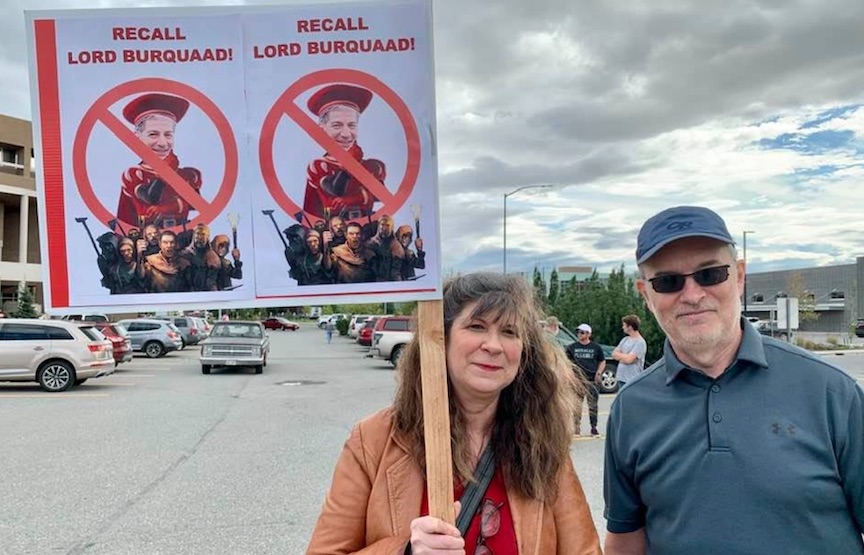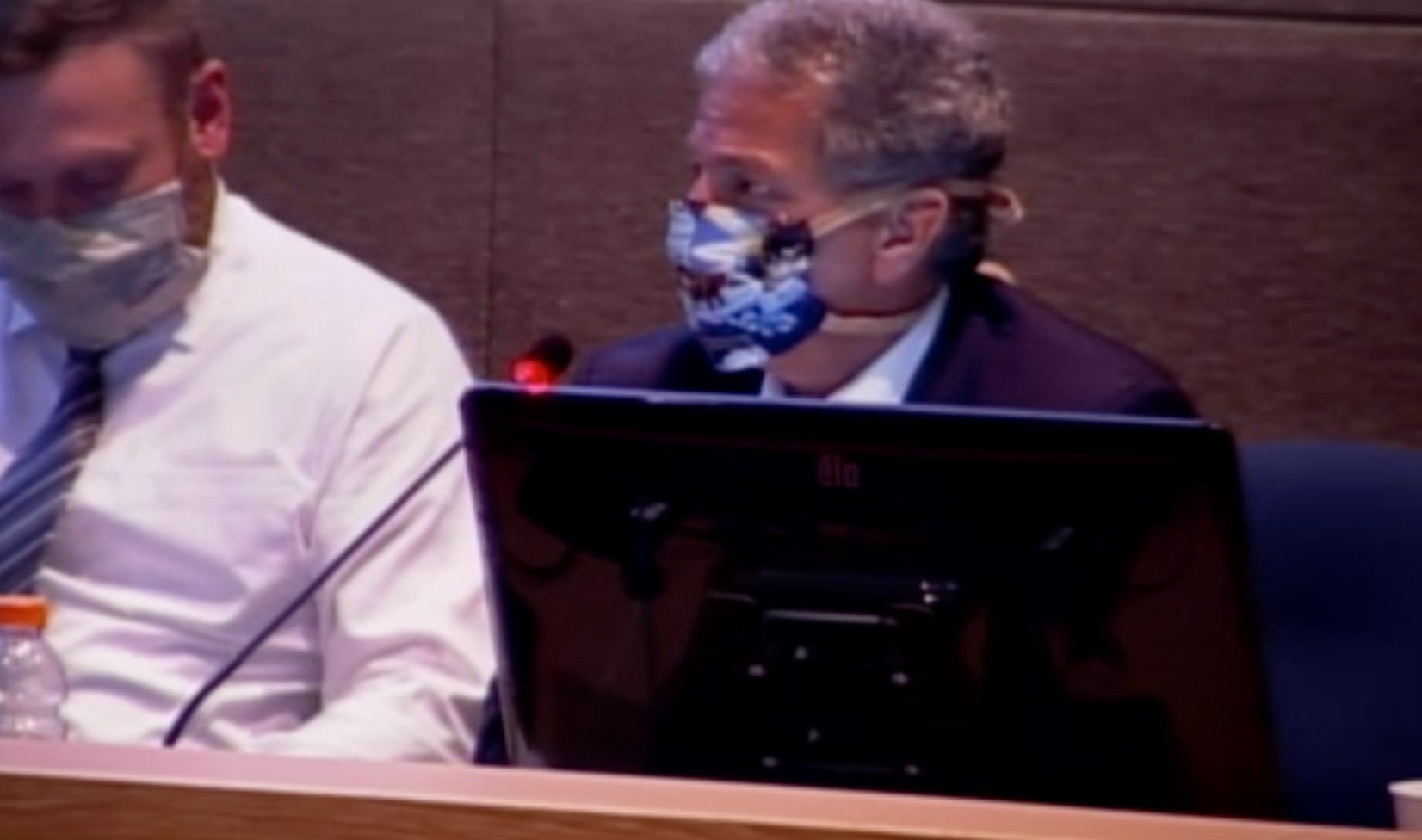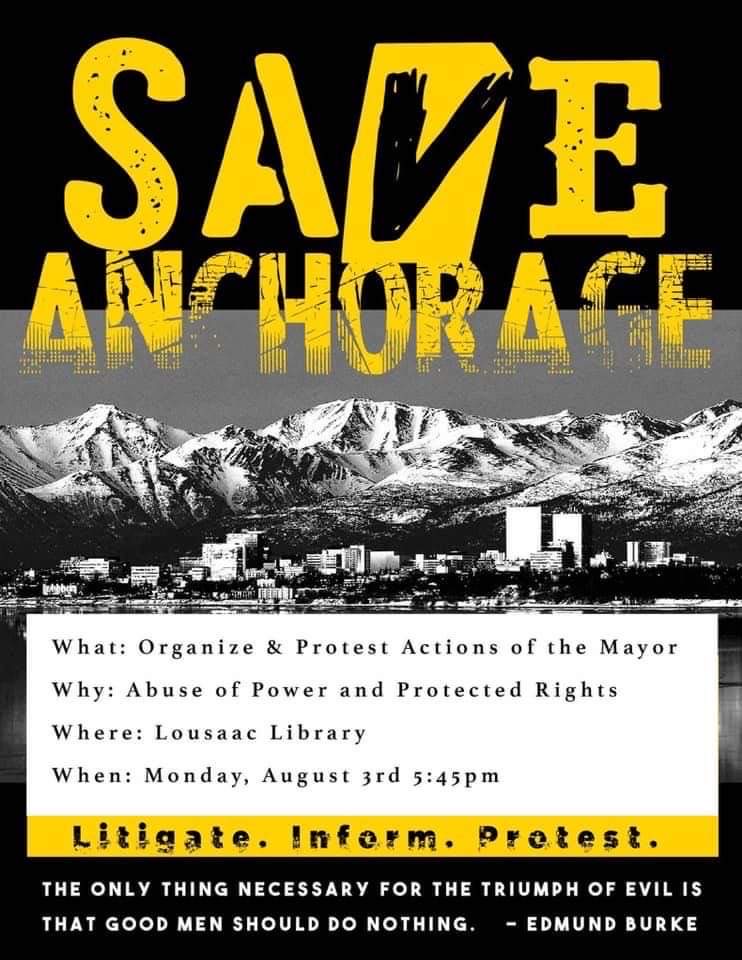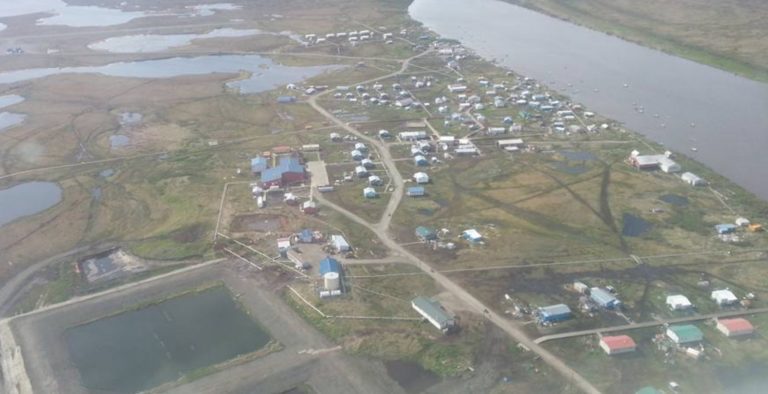BUSY DAY AT THE DINER THAT WOULDN’T OBEY BERKOWITZ
A war of words over restaurant closures in Anchorage broke out on Facebook today, as more than one popular restaurant in Anchorage openly defied Mayor Ethan Berkowitz’ order to close and people took to social media to discuss it. But it was the one restaurant that got everyone talking, even though a couple of other ones looked like they defied the ban as well.
Kriner’s Diner turned on the “open” sign this morning as usual and by noon the code enforcers of the municipality had arrived and taped a “Stop Work Order” on the building. The code enforcers, who warned Kriner of possible jail time, were roundly booed by the diners inside.
In the end, Andy Kriner said he was more at risk of having to close temporarily at 3 pm because he was running out of food, not because of the stop work order. The restaurant will be open again at 9 am on Wednesday, he said.
On Facebook, people were posting pictures of themselves at the cafe on C Street, and business was brisk. Some people came in and left money on the counter for the Kriner family, to pay the $500 per day fine the mayor was threatening to levy.
Also on Facebook, incensed critics raged about the irresponsibility of staying open and the patrons who supported the restaurants.
Harriet Drummond, the House Representative for District 18, ranted about the “incredibly dangerous behavior,” while her husband, Elstun Lauesen said that the Kriner’s Diner crowd were “hopeless, miserable people.”

- There were 40 new cases of coronavirus diagnosed in Anchorage in the last 24 hours.
- Alaska has the sixth lowest case load per capita in the country.
- Hospitals rooms are half empty in Anchorage. There are 27 reported COVID-19 cases in Alaska hospitals currently.
Then came a text message from Mayor Ethan Berkowitz to the owner of Kriner’s Diner. The mayor wanted to talk.
“Come on in,” Andy Kriner responded on text. There was a phone call. Evidently the mayor was trying to convince Kriner that the CARES Act money would cover his losses. Kriner did not seem to have time; there were people to feed.

The war was definitely on as diners enjoyed their meals and as a server bought meals for veterans. Former House Speaker Mike Chenault was spotted, and so was a local reporter, who shall go unnamed.
The patrons cheered when a group of veterans showed up for breakfast, and gave them and Assemblywoman Jamie Allard of Eagle River a standing ovation. Allard arrived with legislative candidate Kathy Henslee, who is running for House District 23. The two were having breakfast before hitting the road for the door-to-door campaigning.
After the code enforcers left, a patron exited the building and tore the stop work order off the wall on his way out.


